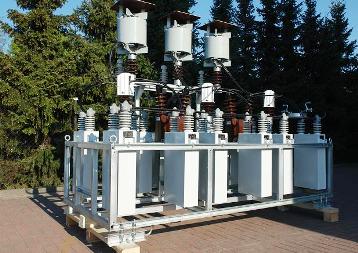Condensing units of distribution substations — purpose, features of operation
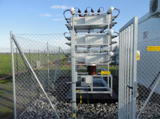 Reactive power is required for the operation of such consumers as asynchronous motors for various purposes, pumps, arc melting furnaces. The operation of these consumers requires a small amount of reactive power, but in practice large volumes of reactive flux in the electrical network, which occurs due to the high load of consumers with an active inductive load.
Reactive power is required for the operation of such consumers as asynchronous motors for various purposes, pumps, arc melting furnaces. The operation of these consumers requires a small amount of reactive power, but in practice large volumes of reactive flux in the electrical network, which occurs due to the high load of consumers with an active inductive load.
The presence of a large amount of reactive power in the electrical network leads to an additional load on power lines, transformers and other equipment, is one of the reasons for the drop in the voltage of the power lines. Therefore, the issue of reactive power compensation in substations is quite relevant. One way to compensate for reactive power is to install capacitor banks in distribution substations.
Capacitors are a set of static capacitor banks… The value of reactive power in the electrical network is constantly changing as the load value of the consumers changes. Therefore, the capacitor banks are divided into groups, which makes it possible to compensate the reactive power in steps, depending on its value.
The inclusion of groups of capacitors in the electrical network is carried out using contactors or thyristors. Modern capacitor units work in automatic mode, performing automatic switching on and off of capacitor banks, depending on the size of the reactive component in the electrical network.
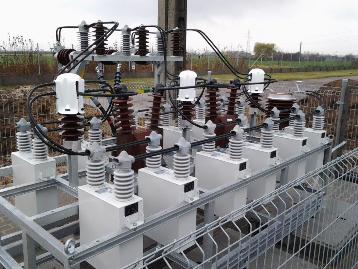
Capacitor units are produced in a wide range of nominal voltage — from 0.4 to 35 kV. High-voltage installations with a voltage of 6, 10, 35 kV are usually installed in the busbars of distribution substations, where reactive power compensation is required. Such installations are called centralized. There are also individual and group capacitor units that compensate for reactive power directly at the consumer.
Low-voltage capacitor devices for a voltage of 0.4-0.66 kV are used to compensate for reactive power directly on loads - welding machines, pumps, electric motors and other consumers with an active-inductive nature of the load. Low voltage compensators make it possible to compensate both constant and transient reactive power due to their high response speed.
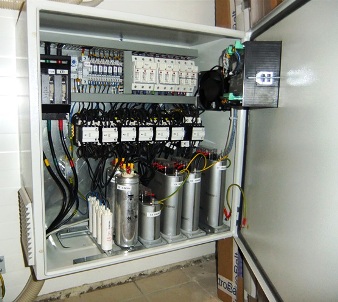
Operation of condenser units
To ensure the durability of capacitor units, it is necessary to observe the rules for their operation.
Compensators, like any electrical equipment, are designed to operate at certain nominal electrical parameters — load current and voltage.
It is allowed to overload the installation by 30-50% in terms of current (depending on the type of capacitor installation) and 10% in terms of voltage. The operation of the compensators is prohibited in case of large imbalances in the phase currents, as well as in case of different voltages of individual capacitors (groups of capacitors). To compensate the reactive power of an unbalanced load, there are separate types of capacitor units.
In the room where the compensating devices are installed, the temperature must be maintained within the limits specified in the passport data of the device. Usually this is a temperature range of -40 … + 50 ° C.
Capacitors are protected against emergency operation. Therefore, if the device is excluded from the action of the built-in protections, it is forbidden to put it into operation until the cause of the operation is established. protective devices.
During the operation of the capacitor units, it is necessary to carry out their periodic checks for timely detection of malfunctions, damage to elements. Installations are taken out of service when the following signs are detected: leakage of the impregnating liquid of the capacitors, signs of plate damage, deformation of the capacitor walls. You should also pay attention to the condition of the support insulators, busbars and contact connections.
Compensators can work both in manual and automatic mode. The choice of mode depends on the power quality requirements.If it is necessary to maintain the power factor (ratio of reactive power to apparent power) at a high level, the devices operate in automatic mode.
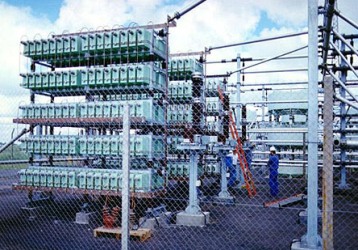
In the absence of strict requirements for the value of the reactive component, the capacitor units are switched on by the service personnel who exercise control over the mode of operation. substation equipmentin particular, it controls the level of reactive power in the electrical network.

